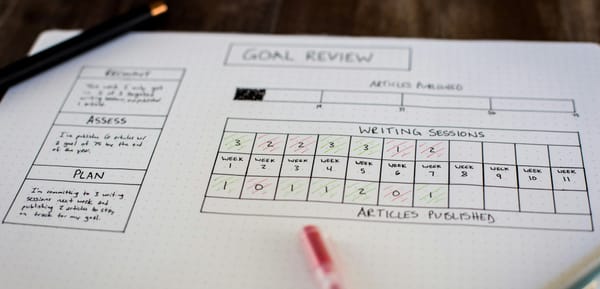How AI Can Help You Prepare for In-Person Therapy

Starting therapy is one of the most courageous things you can do for your mental health but let’s be honest, it can also feel intimidating. What do you even say in the first session? How do you explain everything going on in your head when it’s all tangled? And what if you’re not even sure what you want from therapy yet?
That’s where AI tools like Aitherapy come in. Before you ever step into a therapist’s office, AI can help you make sense of your emotions, identify patterns in your thinking, and build confidence in expressing yourself. Think of it as a warm-up: a private, judgment-free space to explore what’s on your mind and what you want from therapy.
In this post, we’ll explore how AI can be a powerful tool in getting emotionally ready for in-person therapy so that when the time comes, you’re not walking in blind. You’re walking in prepared.
Why Preparation Matters in Therapy
Therapy isn’t just about talking, it’s about doing the inner work. And like anything that takes work, showing up prepared can make a huge difference.
Whether you’re starting therapy for the first time or returning after a break, feeling unsure or unprepared is common. You might have thoughts like:
- “Where do I even begin?”
- “What if I ramble or cry or freeze up?”
- “What am I supposed to get out of this?”
These are valid concerns and they can create anxiety that makes it harder to open up or stay consistent. But research shows that when people come to therapy with some clarity around their goals, concerns, or emotional state, they tend to make progress faster and feel more empowered throughout the process.
Preparation doesn’t mean having it all figured out. It means being a little more in touch with your inner world: your needs, patterns, and pain points.
And this is where AI, especially a CBT-based tool like Aitherapy, can help. It gives you a place to start unpacking the mess, so you don’t have to walk into therapy feeling lost.
What AI Therapy Tools Can Offer Before You Step into the Room
AI therapy tools aren’t just for when you can’t access a human therapist, they can also be your emotional prep space before seeing one. With platforms like Aitherapy, you get 24/7 support designed to help you understand what’s going on inside your mind, at your own pace.
Here’s what AI tools can do to support your therapy journey even before it begins:
1. Safe Space to Open Up Without Pressure
You can say anything without fear of judgment. Whether you’re talking about past trauma, messy thoughts, or just feeling overwhelmed, Aitherapy gives you a space to let it out. That alone can bring relief and clarity.
2. Organize Your Thoughts with CBT Structure
Aitherapy is built on Cognitive Behavioral Therapy (CBT), meaning it helps you recognize thinking patterns and reflect on your emotions logically. By identifying triggers and reactions, you start seeing the “why” behind how you feel.
3. Surface Themes and Patterns
After just a few conversations, you may begin to notice:
- Repetitive worries
- Negative self-talk
- Emotional triggers
These patterns are exactly what therapists look for and AI helps you spot them early, making your in-person therapy more focused from the start.
4. Practice Expressing Yourself
If you're afraid of “not knowing how to talk in therapy,” AI is like rehearsal. You get comfortable putting emotions into words and describing your experiences, so you’re not stumbling when it really counts.
In short, AI tools like Aitherapy don’t replace therapists, they prepare you to work with one more effectively.
Getting to Know Yourself First: Prompts and Patterns
Before you can share your story with someone else, you need to understand it yourself, at least a little. AI tools help with exactly that.
When you talk to Aitherapy, you’re not just venting into a void. You’re responding to thoughtful prompts, following structured conversations, and being gently guided to reflect on your own behavior, thoughts, and emotions.
How AI Helps Surface Self-Awareness:
- Guided Reflection: Instead of “How are you feeling?” (which can be overwhelming), Aitherapy might ask, “What’s been weighing on your mind lately?” or “When did you last feel truly calm?”
- Identifying Emotional Triggers: Through repeated chats, AI can help you notice that certain situations, like criticism or silence, consistently spark anxiety or self-doubt.
- Recognizing Thought Loops: Tools like Aitherapy can flag patterns such as black-and-white thinking, catastrophizing, or people-pleasing. Once you see these patterns, you can start questioning them.
Example:
You’ve been feeling drained after every conversation with a certain friend. Aitherapy walks you through that experience and helps you realize it’s because you often don’t set boundaries and that saying “yes” when you mean “no” is a recurring pattern. That’s the kind of insight you can bring straight into therapy.
Understanding these emotional habits ahead of time makes your therapy sessions deeper, faster, and more productive, because you’re not starting from scratch. You’re already in the work.
Building Communication Skills with AI
One of the hardest parts of therapy is finding the words. How do you explain your emotions clearly? How do you bring up something uncomfortable without freezing or deflecting? That’s a skill and like any skill, it gets better with practice.
AI therapy tools like Aitherapy can help you build that communication muscle before you walk into a real therapy room.
1. Practicing Emotional Language
Most of us weren’t taught how to say things like:
- “I feel hurt because I didn’t feel seen.”
- “I think I’ve been numbing myself to avoid dealing with grief.”
These aren’t easy phrases but AI can guide you there. Through structured reflection and CBT-based prompts, Aitherapy helps you go beyond “I’m fine” to real clarity.
2. Learning How to Express Discomfort or Boundaries
If you’re scared to be honest in therapy (which is totally normal), practicing with AI helps you rehearse. You can try saying things like:
- “I don’t think this topic feels safe yet.”
- “I’m not ready to talk about that.”
- “I need help slowing down when I start to dissociate.”
That way, you’re not figuring it out live in front of a stranger. You’ve already practiced.
3. Roleplaying or Rehearsing Conversations
AI can simulate difficult conversations with yourself, with others, or with your future therapist. It’s a way to explore what you wish you could say, so when the moment comes, you’re ready.
Why It Matters:
Good therapy isn’t about pleasing your therapist or saying the “right” thing, it’s about being honest. Aitherapy helps you build the vocabulary and confidence to speak that truth out loud.
Setting Goals Before You Start Therapy
Walking into therapy without a clear goal is completely okay, but having even a rough idea of what you want to work on can give your sessions more direction and momentum. AI can help you get there.
Why Goals Matter in Therapy:
Studies show that people who enter therapy with clear goals tend to stay more engaged and see better outcomes. Goals don’t have to be perfect or permanent — they’re just guideposts to help you and your therapist navigate your progress together.
How Aitherapy Helps You Set Therapy Goals:
Through regular check-ins and CBT-based reflections, Aitherapy naturally helps you clarify what’s bothering you and what you hope will change. You might realize:
- “I want to stop spiraling after every argument.”
- “I want to feel more confident setting boundaries.”
- “I want to stop feeling guilty for resting.”
Even if you didn’t think of these as “goals,” they become starting points, things you can bring into your first therapy session.
Examples of Goal-Setting Conversations with AI:
- Aith: “What’s been hardest for you emotionally this week?”
- You: “I keep feeling like I’m not doing enough, even when I’m exhausted.”
- Aith: “Sounds like self-criticism is weighing on you. Would it be helpful to explore ways to be kinder to yourself?”
That’s how goals emerge: naturally, from your real experiences. With Aitherapy, you get to explore those themes in a low-pressure setting, so you're not scrambling to define your “issue” during session one.
Therapists love when clients come in with insights like these, not because it makes their job easier, but because it helps you make the most of every minute.
Managing the Emotional Weight Between Booking and Starting Therapy
There’s often a gap between deciding to go to therapy and actually having your first session. Maybe it's days. Maybe it’s weeks. That waiting period can be emotionally heavy, full of overthinking, second-guessing, or even backing out.
This is where AI therapy tools can make a real difference.
1. Easing the Pre-Therapy Anxiety
It’s common to feel nervous before your first session. You might think:
- “What if I don’t click with the therapist?”
- “What if I cry too much or say the wrong thing?”
- “What if I don’t even know what’s wrong?”
Talking to an AI like Aitherapy during this time helps you release some of that buildup. Even a short, daily check-in can reduce the sense of emotional overload and make you feel more grounded.
2. Staying Connected to Your Why
When doubts creep in, Aitherapy can gently remind you why you decided to seek help in the first place, through your own words, reflections, and goals. It becomes a kind of emotional anchor.
3. Using AI Tools to Regulate in Real Time
While you're waiting, Aitherapy can help you:
- Log moods and notice changes
- Practice grounding techniques when overwhelmed
- Reframe anxious thoughts using CBT logic
- Reflect on recent emotional wins or struggles
These small actions keep you engaged with your healing journey, even before it “officially” begins.
4. Avoiding the “Therapy Drop-Off”
Many people cancel or ghost their first therapy appointment out of fear or uncertainty. But when you’ve been warming up with AI, you’re less likely to freeze. You’ve already started. That momentum matters.
Think of it this way: Aitherapy doesn’t just help you prepare for therapy, it helps you stick with it.
Bridging the Digital and Human: Bringing AI Insights into Therapy
One of the most powerful ways to use AI therapy tools is to carry what you’ve learned with you into your in-person sessions. AI isn’t here to replace a therapist, it’s here to support the human work you’re about to do.
1. Bringing Patterns and Themes to Your Therapist
After a few weeks of chatting with Aitherapy, you might notice recurring thoughts like:
- “I always feel responsible for other people’s emotions.”
- “I never say how I actually feel in real-time.”
- “I panic when people pull away.”
These are therapy gold. Writing them down or reviewing your chat history can help you summarize what’s been coming up for you. That way, your therapist doesn’t have to spend the first few sessions trying to piece it all together and you’re not left thinking, “Where do I even start?”
2. Sharing AI Journal Logs or Reflections
Some users choose to share parts of their Aitherapy reflections directly with their therapist. It could be a message thread that captured a moment of clarity, a written goal, or a mood log.
Even a few lines like “I noticed I avoid talking about my dad when I feel anxious” can jumpstart a much deeper, more targeted session.
3. Using Aitherapy Between Sessions
Once you start therapy, Aitherapy can remain a helpful companion. You can:
- Reflect after a tough session
- Prepare for emotionally charged topics
- Stay consistent with your mental health work between appointments
Your therapist becomes the guide, and Aitherapy becomes the practice ground between sessions.
4. Therapists Are Starting to Embrace AI Tools
Many modern therapists appreciate when clients use journaling apps or CBT tools and Aitherapy is a natural evolution of that. It’s private, secure, and focused on emotional growth.
In short, AI doesn’t interrupt the healing process, it accelerates it. When used thoughtfully, it helps you show up more self-aware, prepared, and ready to go deeper.
Is It for Everyone? Considerations and Limitations
AI therapy tools like Aitherapy can be incredibly helpful — but they’re not a perfect fit for everyone, and they’re not meant to replace human therapists.
Who Benefits Most from AI-Assisted Preparation:
- First-time therapy seekers who feel anxious or unsure about what to expect
- People with social anxiety who need a warm-up before face-to-face conversations
- Busy individuals who want to reflect on their own time, at their own pace
- Those who struggle with emotional awareness and need help naming feelings or spotting patterns
- Anyone in the waiting period between booking therapy and starting it
What AI Can’t Do (And Shouldn’t Try To):
- Provide crisis support or handle emergencies
- Replace the nuance, attunement, and emotional presence of a trained therapist
- Offer diagnosis, medication advice, or in-depth trauma processing
Aitherapy is designed to support your mental health journey, not take over it. It works best when used with intention: as a tool for reflection, emotional literacy, and self-guided healing that prepares you for deeper work with a therapist.
Built with Safety and Ethics in Mind
Unlike generic AI tools, Aitherapy is built specifically for mental health. It uses evidence-based CBT techniques, prioritizes user privacy, and never pretends to be human. That transparency matters.
So while it’s not for crisis care or deep clinical intervention, it can be an incredibly powerful first step, one that helps you walk into therapy not with confusion, but with confidence.
Getting Started with Aitherapy
If you're curious about how AI can support your journey toward therapy, the good news is—you can start right now. Aitherapy is available 24/7, completely private, and designed to meet you exactly where you are.
How to Use Aitherapy to Prepare for In-Person Therapy:
1. Start With a Check-In
Open Aitherapy and simply share how your day is going. You don’t need to know what to say, just begin. The AI will guide you with gentle, evidence-based prompts rooted in CBT.
2. Reflect on Patterns and Triggers
After a few conversations, you’ll start noticing emotional themes or thought loops. You can jot these down or revisit them later. They’re incredibly useful to bring into your first therapy session.
3. Explore Your Goals
Use Aitherapy to identify what you want to work on in therapy. The AI can help you reflect on what’s been hard lately, what you want to change, or where you feel stuck.
4. Practice Expressing Your Feelings
Use the space to explore how you feel about starting therapy. Nervous? Hopeful? Confused? It’s all valid — and saying it out loud (even to AI) builds emotional fluency.
5. Use It in the Waiting Period
If you’ve already booked your first appointment, use Aitherapy as a way to stay emotionally engaged and reduce anxiety during the wait. You can show up already feeling seen — by yourself.
Try It for Free
You don’t have to commit right away. Aitherapy gives you 20 free messages every day, no credit card required. And when you're ready, the full version is just $15/month, less than a single therapy copay.
Whether you’re months away from starting therapy or walking into your first session tomorrow, Aitherapy can help you take the first step today.
Walk In Feeling More Ready
Therapy isn’t just about showing up it’s about showing up ready to do the work. That doesn’t mean having it all figured out. It means giving yourself the chance to slow down, reflect, and begin understanding your emotional world before you step into someone else’s office.
That’s exactly what Aitherapy is here for.
By helping you explore your thoughts, spot your patterns, and practice putting your feelings into words, Aitherapy becomes more than just a tool — it becomes your emotional warm-up. The bridge between confusion and clarity. Between hesitation and action.
So if you're considering therapy, don’t wait until “the perfect time” or until you have the words. Start with one conversation. One moment of reflection. One honest check-in.
You might be surprised at how much you already know about yourself and how much easier it becomes to share that with someone who’s ready to help you heal.
Start Chatting for Free!





